Tangkahan is a
small village on the border of Gunung Leuser National Park located in North
Sumatra. It is situated at the junction of 2 rivers, the Buluh River and the
Batang River. Tangkahan specialises in eco-tourism activities like jungle
trekking and Elephant trekking.


 When you arrive at Tangkahan you need to pay
2000Rp at the Visitors Centre to go down to the river. Then to cross the
river it is 10,000Rp per person for 3 days, you can cross as many times as
you like.
When you arrive at Tangkahan you need to pay
2000Rp at the Visitors Centre to go down to the river. Then to cross the
river it is 10,000Rp per person for 3 days, you can cross as many times as
you like.


The Elephant camp is a 15 - 20 minute walk up river from the visitors centre in Tangkahan. They bathe the elephants everyday at 9am and 4pm. You'll need to purchase a ticket at the visitors centre for 20,000Rp per person before you go to the elephant camp. The elephant camp now has a new additional. A baby elephant about 1 year old comes down every morning and afternoon for wash with all the elephants.






Elephant trekking
There are various options for experience trekking in the jungle on the back of an elephant. There is a minimum of a 1 hour trek up to a 4 day trek through the Gunung Leuser National Park to Bukit Lawang.

For more information and prices for longer tracks contact the Elephant Jungle Patrol via their website www.elephantjunglepatrol.com. Trekking to Bukit Lawang is possible and will take 4 days.
For more information about how you can help save the Asian elephants check out the Elephant Family webpage. They are raising funds to help elephants all over Asia and Sumatra Indonesia. They currently have a veterinarian onsite in Medan, Sumatra who is helping to ensure the health of elephants all over Sumatra.
Hot spring
Just across from the Jungle Lodge is a small cave with a hot spring pouring hot water into the river. There is a large log tied up at the river bank which allows you to lay back and enjoy the mixture of the hot spring waters and cold water flowing down the river.
Waterfall
Just before the Buluh River meets the Batang River there is a small waterfall. You have to walk up a small creek about 100 meters to reach the waterfall. Great for sitting under to get a jungle massage!
There is also another larger waterfall about an hours trek up the Buluh River. Most of the way you need to walk in the river as there are no jungle trails and some sections you need to swim up river.
There is also the waterfall picture below. This waterfall is located in the direction of Pantai Salak. You first have to cross the river then walk around 4 kilometers. The waterfall is located behind the river Salak. You can get a guide to take you for around 150,000Rp or less if you bargain nicely. At the bottom of the waterfall is a beautiful pool of clear water, excellent for swimming. Be careful on the rocks of the waterfall as there is alot of moss so very easy to slip.
 How to get to Tangkahan
How to get to Tangkahan
There are 2 ways you can get to Tangkahan. From Medan there are only 2 buses a day leaving from Pinang Baris Bus Terminal, leaving at 10am and 1pm and taking around 4.5 - 5 hours (longer if raining). The cost is 15,000Rp per person.
Buses leave Tangkahan at 7.30am and 2.30pm to go back to Medan.
You can also get to Tangkahan from Bukit Lawang either on the back of a motorbike, a very bumpy 3 hour trip or hire a 4WD to take you. Prices for a 4WD can be up to 1,000,000Rp (US$83) for a one way trip.
Accommodation in Tangkahan
List of Hotels and guesthouses in Tangkahan

 Green Lodge is located right at the
elephant camp. Prices start are 85,000Rp per night. For pictures, prices and
contact details click here.
Green Lodge is located right at the
elephant camp. Prices start are 85,000Rp per night. For pictures, prices and
contact details click here.
Bamboo River Hotel (3 reviews) located right next door to Mega Inn. Price is 100,000Rp per night. For pictures, prices and contact details click here.

There are 7 trained elephants
at Tangkahan which are available for jungle trekking though their primary
role is to patrol and protect the National Park from illegal activities like
animal poaching and illegal logging. These elephants were original
troublesome elephants that were involved in destroying fields and houses in
surrounding villages. Now they serve to protect not only the villages but
other elephants in the wild.

Tangkahan River Crossing

Buluh River Tangkahan
Elephant camp at TangkahanThe Elephant camp is a 15 - 20 minute walk up river from the visitors centre in Tangkahan. They bathe the elephants everyday at 9am and 4pm. You'll need to purchase a ticket at the visitors centre for 20,000Rp per person before you go to the elephant camp. The elephant camp now has a new additional. A baby elephant about 1 year old comes down every morning and afternoon for wash with all the elephants.



Elephant Washing in
Tangkahan
There are various options for experience trekking in the jungle on the back of an elephant. There is a minimum of a 1 hour trek up to a 4 day trek through the Gunung Leuser National Park to Bukit Lawang.

Elephant Trekking in
Tangkahan
In 2012 they changed the price of the
Elephant trekking and removed the option of 2 and 3 hour treks. Now only a 1
hour trek on the elephants is available and the cost is 650,000Rp per
person.For more information and prices for longer tracks contact the Elephant Jungle Patrol via their website www.elephantjunglepatrol.com. Trekking to Bukit Lawang is possible and will take 4 days.
For more information about how you can help save the Asian elephants check out the Elephant Family webpage. They are raising funds to help elephants all over Asia and Sumatra Indonesia. They currently have a veterinarian onsite in Medan, Sumatra who is helping to ensure the health of elephants all over Sumatra.
Hot spring
Just across from the Jungle Lodge is a small cave with a hot spring pouring hot water into the river. There is a large log tied up at the river bank which allows you to lay back and enjoy the mixture of the hot spring waters and cold water flowing down the river.
Waterfall
Just before the Buluh River meets the Batang River there is a small waterfall. You have to walk up a small creek about 100 meters to reach the waterfall. Great for sitting under to get a jungle massage!
There is also another larger waterfall about an hours trek up the Buluh River. Most of the way you need to walk in the river as there are no jungle trails and some sections you need to swim up river.
There is also the waterfall picture below. This waterfall is located in the direction of Pantai Salak. You first have to cross the river then walk around 4 kilometers. The waterfall is located behind the river Salak. You can get a guide to take you for around 150,000Rp or less if you bargain nicely. At the bottom of the waterfall is a beautiful pool of clear water, excellent for swimming. Be careful on the rocks of the waterfall as there is alot of moss so very easy to slip.

There are 2 ways you can get to Tangkahan. From Medan there are only 2 buses a day leaving from Pinang Baris Bus Terminal, leaving at 10am and 1pm and taking around 4.5 - 5 hours (longer if raining). The cost is 15,000Rp per person.
Buses leave Tangkahan at 7.30am and 2.30pm to go back to Medan.
You can also get to Tangkahan from Bukit Lawang either on the back of a motorbike, a very bumpy 3 hour trip or hire a 4WD to take you. Prices for a 4WD can be up to 1,000,000Rp (US$83) for a one way trip.
List of Hotels and guesthouses in Tangkahan
Jungle Lodge (8
reviews) is probably the nicest
place to stay. Located 10 minutes walk from the river crossing. For
pictures, prices and contact details
click here.
Mega Inn (7
reviews) located right at the river crossing. Prices from 50,000Rp -
85,000Rp per night. For pictures, prices and contact details
click here.

Bamboo River Hotel (3 reviews) located right next door to Mega Inn. Price is 100,000Rp per night. For pictures, prices and contact details click here.
Welcome to BukitLawang.com. Providing information on tourism and visits to Bukit Lawang, Sumatra, Indonesia.
Bukit Lawang is a popular tourist destination for its laidback riverside lifestyle, jungle treks in the Gunung Leuser National Park, and its world-famous orangutan rehabilitation centre. This website aims to provide information on all aspects of Bukit Lawang including trekking, accommodation, food and neighbouring attractions.
Please visit our forum if you have any questions not answered by the site.
Bukit Lawang is a popular tourist destination for its laidback riverside lifestyle, jungle treks in the Gunung Leuser National Park, and its world-famous orangutan rehabilitation centre. This website aims to provide information on all aspects of Bukit Lawang including trekking, accommodation, food and neighbouring attractions.
Please visit our forum if you have any questions not answered by the site.
What to do

The prime tourist draws in Bukit Lawang are orangutan trekking in the
Gunung Leuser national park and visiting the orangutan feeding, which
takes place twice daily in Bukit Lawang. However some visitors stay for
many weeks without visiting the orangutans, instead preferring to soak
up the relaxed atmosphere - nightly jungle parties at various
guesthouses featuring guitar-playing guides drinking bir Bintang and
singing late into the night.
By day, activities include tubing on the river (hire a tube for around $1, walk up stream, then float down to wear you started - best done as a small group, speak to one of the guides, get them to arrange a barbecue upstream, bring some beer and then come back together), swimming in the river, fishing in the Bohorok (main) or Landak (30 minutes walk) river or fishing in one of the local fishing ponds.
Several outfits in Bukit Lawang offer rafting and kayaking, this is done locally but not in Bukit Lawang itself. Again, just contact one of the many guides if you have any questions.
By day, activities include tubing on the river (hire a tube for around $1, walk up stream, then float down to wear you started - best done as a small group, speak to one of the guides, get them to arrange a barbecue upstream, bring some beer and then come back together), swimming in the river, fishing in the Bohorok (main) or Landak (30 minutes walk) river or fishing in one of the local fishing ponds.
Several outfits in Bukit Lawang offer rafting and kayaking, this is done locally but not in Bukit Lawang itself. Again, just contact one of the many guides if you have any questions.
When to go

There is no real 'season' to visit Bukit Lawang. The rainy season
means torrrential rains - but generally only in the evening/night, and
rains moderate temperatures.
Note that on Indonesian public holidays and Sundays (except during Ramadan), hundreds of local visitors crowd the village, which Western tourists may find less than appealing - if visiting on a Sunday it is wise to arrange a visit somewhere quieter, such as trekking or going to the Landak river.
Accommodation prices may very slightly by season, but not hugely so, and with accommodation prices generally ranging from $5-$30, this is not a major concern.
Note that on Indonesian public holidays and Sundays (except during Ramadan), hundreds of local visitors crowd the village, which Western tourists may find less than appealing - if visiting on a Sunday it is wise to arrange a visit somewhere quieter, such as trekking or going to the Landak river.
Accommodation prices may very slightly by season, but not hugely so, and with accommodation prices generally ranging from $5-$30, this is not a major concern.
Facilities

Although Bukit Lawang is by no means a city it has many modern facilities available, although some others are still lacking.
You can find:
You can find:
- Electricity - although powercuts occur several times a week and a small torch is highly recommended for power cuts and for poorly lit areas, visiting caves, etc.
- Internet access - in three internet cafes located in the new-built village set on the hill bordering the right bank of the Bohorok river. Prices and speeds vary, Leuser Netwave, on the left is fastest, but at 15,000 rp/hour with your own laptop (wifi) or 20,000rp/hour with their laptop, is expensive. The CDC internet cafe, on the right, provides free internet for local people but requests a donation from tourists. There is another internet cafe charging 5,000 rp/hour in between the two. A fourth internet cafe, charging 4,000rp/hour has fast access, and is in the adjacent village of Gotong Royong, about 2km from Bukit Lawang, however a becak will cost you 5,000rp/each way, negating most of the savings. The orphanage past Batu Mandi hotel on the way to the bat cave also offers wifi internet in return for a donation to their cause.
- ATM - 11km away in the village of Bohorok, a guide will take you by motorbike for around 50,000rp round-trip, or you can try to take a local bus known as an 'opelet' for about 3,000rp/each way, plus potentially a becak to take you to the bus station about 1.5km from Bukit Lawang. The ATM is owned by Bank Rakyat Indonesia and is on the Mastercard/Cirrus network. Visa/PLUS cards will NOT work. If you have a Visa-family card, do not try to use it here. In this case you will need to take a longer journey possibly to Binjai, about 2 hours away. Note that the ATM in Bohorok is sometimes empty of money and there may be a day or two's delay while it is reloaded. Generally it's safer to bring plenty of money to Bukit Lawang rather than try to get more.
- Post Office - like the ATM, this is in Bohorok. Here you can maybe send a post card home, but don't send anything of value. Western Union transfers can be received here. Open Monday-Saturday.
- Money changer - there are a number of money changers who will change a variety of Western and regional currencies to rupiah. Rates are slightly lower than in Medan.
- Mobile phone coverage - now very reliable, you can buy a SIM card for your (unlocked) mobile phone on the Telkomsel network and enjoy cheap local calls as well as 3G mobile internet. Coverage locally is very good.
- Market - on Friday from morning till around 3pm, located 2km in Gotong Royong. Popular with tourists, a variety of fruits, vegetables, spices, fish and clothes are sold. Another, similar, market on Sundays in Bohorok (11km away).
- Clothing - mostly tourist-oriented t-shirts, for buying jeans etc. try the malls in Medan.
- Mosquito repellent, condoms, sanitary towels, toilet paper. Tampons are not available.
- Medicines - several local pharmacies, but do not stock a complete selection. Medical care is basic, for emergencies visit 'Rumah Sakit Elizabeth' in Medan, the best local hospital.
Accommodation

Accommodation in Bukit Lawang is in three main areas:
Before the village:
On the left bank, accommodation starts at the village entrance:
Before the village:
- Rindu Alam, just before the village, has its own road entrance - so ask your becak/car to take you directly there. The only real 'hotel' in Bukit Lawang, some rooms have air-con. 300 metres walk along the canal to the village proper.
- Bukit Lawang Cottages Eco-Lodge, operated by Paneco, directly across the river from Rindu Alam, situated above the river.
- Batu Mandi- past the Ecolodge towards the bat cave (away from the village), about 200 metres
On the left bank, accommodation starts at the village entrance:
- Wisma Leuser Sibayak, located immediately across the riverover a rickety bridge. Rooms around 100,000rp depending on type
- Yusman, adjacent upstream to Wisma Leuser Sibayak
- Bukit Lawang Indah, adjacent upstream to Yusman
- Back In Touch, past Bukit Lawang Indah located high above the rocks
- Rain Forest. Operated by Nora, formerly of Rain Forest Cafe
- Jungle Inn. Telephone: +62 813 7073 0151
- Sam's Bungalows. Three rooms, Telephone +62 81370093597
- Garden Inn
- Indra Inn
- Back to Nature Guesthouse - for those seeking a real jungle experience - about 1 hour's walk upstream, crossing the river twice
How to get there

The main tourist destinations near Medan aside from Bukit Lawang are Berastagi, a hill-station, and Danau Toba, the world's largest voclanic lake. Both Berastagi and Bukit Lawang are generally visited as a return trip from Medan, although it is possible to arrange to take a tourist bus or charter a bus between the two towns to cut out the stay in Medan. Danau Toba is a little further afield: a tourist bus/charter can be arranged from Bukit Lawang, or from Medan itself, about a five-hour journey. A slightly cheaper option is to take the local bus from Amplas bus station, Medan.
All will drop off in Tuk Tuk on the shores of Lake Toba, for a ferry across. From Lake Toba, travellers will either double back to Medan for an onward or homeward flight, take a six-hour bus journey to Sibolga, the port for Pulau Nias (which is then an 8 hour ferry journey), or continue on by bus to Bukittinggi (which offers cool air, and Danau Maninjau, another lake), a 12-hour journey (longer in slower, cheaper buses). Travelling by bus back to Medan and flying onto Padang, near to Bukittinggi, or to Gunung Sitoli (on Nias itself) would be a slightly shorter and more comfortable journey, albeit more expensive. From Bukittinggi, most people will take the long bus journey to Java, or fly onto Jakarta.
A quicker, more costly alternative is the daily forty minute flight from Medan to Silangit, just a few minutes from Lake Toba. This is operated by Susi Air on 12-seat Cessna aircraft.
Thanks For come
Japan has beautiful nature locations that are breathtaking -- couple
that with man-made wonders that clearly illustrate Japan’s long history
and rich culture -- and you have a tourist destination that is one of
the finest on earth.
If you are planning on taking a trip to Japan, these ten destinations should not be overlooked because they are representative of some of the most beautiful locations in the Land of The Rising Sun.
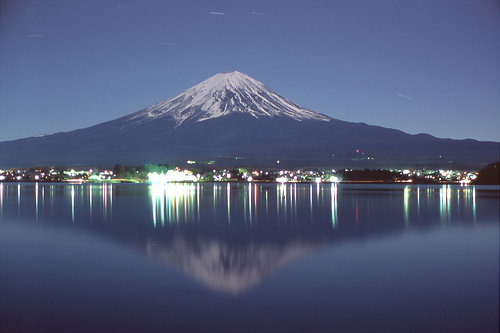
If there ever was an iconic image and destination that clearly defines Japan, it would have to be Mt. Fuji. The almost perfectly symmetrical volcano is considered the national symbol of Japan. Mt. Fuji is so iconic that it has been depicted in various works of art that date back hundreds of years. Mt. Fuji is not just beautiful from afar, adventurous travelers can see how beautiful the volcano is up close by joining various climbs up the mountain. Because of the nature of its topography, Mt. Fuji can be approached from all sides. The official climbing season is in July and August. You can also elect to climb outside of the climbing season but take note that access to it during the off-season is drastically cut.
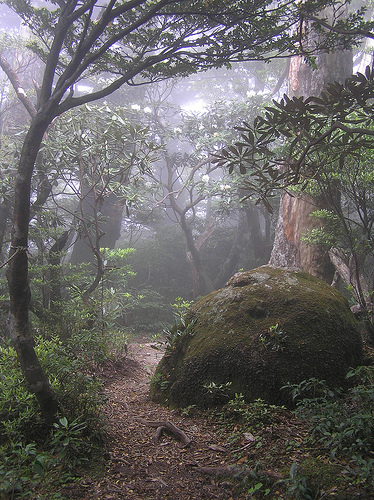
Located off Kyushu’s southern coast, Yakushima is an island that has become a popular destination for travelers who love the outdoors and being in the midst of nature. Yakushima is extensively covered by a beautiful cedar forest called Yakusugi Forest, which is also home to some of the oldest living trees in Japan. There are trees here that are more than 1000 years old. It has even been speculated that the oldest of the trees may be 7000 years old.
Although Yakushima has been logged quite all throughout Japan’s history for use in making cedar shingles during the Edo period, it has survived this and has now become a UNESCO World Natural Heritage Site.
Nature lovers will have fun hiking and camping in the area while communing with the towering trees.

The famous Shiretoko National Park is located on the Shiretoko Peninsula on the eastern part of Hokkaido. This is a fairly isolated area with roads that only go in about three fourths up the peninsula. Even the northern tip can only by seen by boat or by going on a multi-day trekking tour.
Shiretoko is considered the most beautiful of all the national parks in Japan. Because of its relative isolation, the Shiretoko Peninsula has become the home of a very diverse number of animal species including deer, brown bears, and foxes. During winter, the coast gets drift ice. Shiretoko is the southernmost region in the northern hemisphere to experience this.
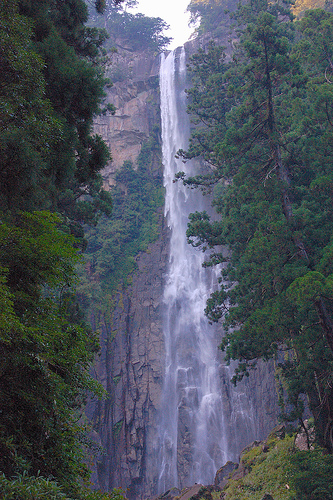
Located near the south of Kyoto and Nara is the Kii Mountain Range. Its proximity to two of the capital cities that were seats of power in ancient Japan means that it is steeped in history. The mountains are located within the Kii peninsula that goes outwards to the Pacific Ocean. This mountain range is considered one of the spiritual places of the country and, according to legend, is the place where the gods of Shintoism and Buddhism lived. Because of this, the mountains have become a sacred place for many groups. There are three pilgrimage routes around the mountain as well as three sacred sites.
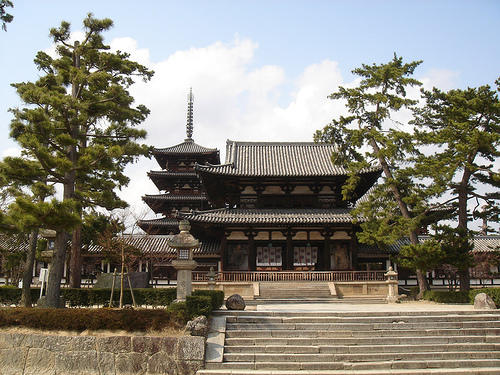
The Horyuji Temple was ordered built by Prince Shotoku in 607. It was destroyed but a new temple was built in 711. The temple is one of the oldest temples in Japan and has become a national treasure. It is composed of a main hall and a five storied pagoda. Along with the central gate, it is one of the world’s oldest surviving wooden structures. There is a newly built building beside the temple that now houses an Buddhist art collection from the 6th and 7th century.
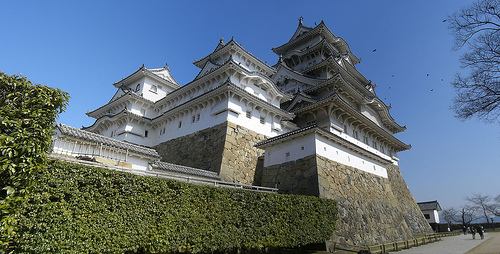
Considered as Japan’s most magnificent castle, Himeji Castle is fortunate for not having been destroyed or damaged by wars, fires or natural calamities. The castle has largely survived unscathed and is in its original state.
The castle has undergone many changes. In the 14th century, a fort was built around the castle site and succeeding clans that lived there would periodically enlarge it. The castle as we see it today was finally finished in 1609.
Himeji Castle is one of the best examples of a Japanese castle and its lush opulence inside (with wooden interiors) is worth checking out.
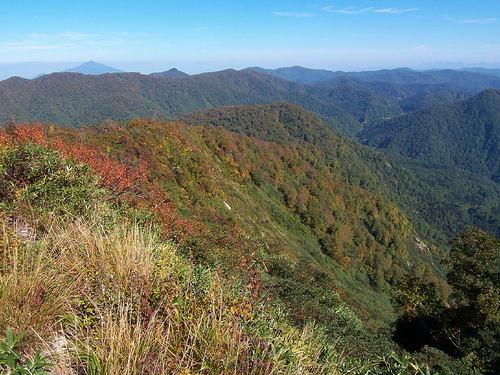
The Shirakami Sanchi or Shirakami Mountain Range straddles the Akita and Aomori prefectures and has a land area of 1300 square kilometers. The mountain range has become an important location in Japan because its natural resources are being protected. For one, one of the few beech forests in the country are located here. Some of the trees in the area are 2000 years old. The altitude of the mountain range has also resulted in the proliferation of alpine flora. But aside from these, the Shirakami Sanchi is also the location of some very interesting sites like the Akaishi River, which is considered the most beautiful piece of water scenery in the country.
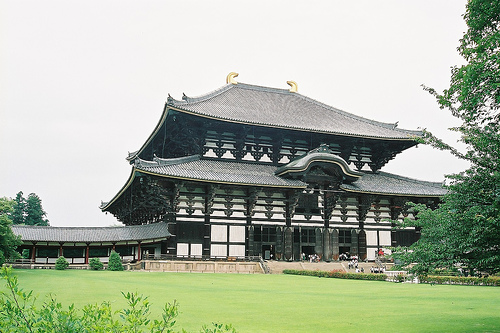
Nara was the old capital of Japan back in the year 710. Because of its important political significance during that time, many important structures and monuments were built here. Most of them are still standing.
The monuments of Nara generally refer to the various ruins found in the area, which include six temples and a primeval forest. Excavations done in the area have resulted in the discovery of various structures including the palace site and Sujakumon Gate. The six temples located in the area are: Todaiji, Kasuga-Taisha, Kofukuji, Yakushiji, Toshodaiji and Gangouji. At present there is a concerted effort to preserve these historic edifices.
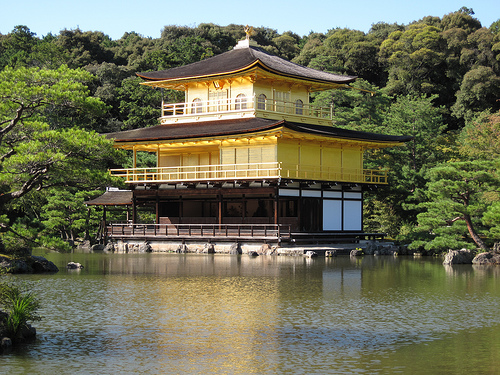
The distinctive Kinkakuji Temple, or Golden Pavilion Temple, is one of the more popular destinations in Kyoto. The building is a very beautiful structure and is made very unique because of the gold foil that was used to envelope the whole structure. The building was built in 1397 as a retirement residence for Shogun Yoshimitsu. The present Kingakuji has been rebuilt because the building was burned down twice during the Onin War in the 1400s and then again in 1950.
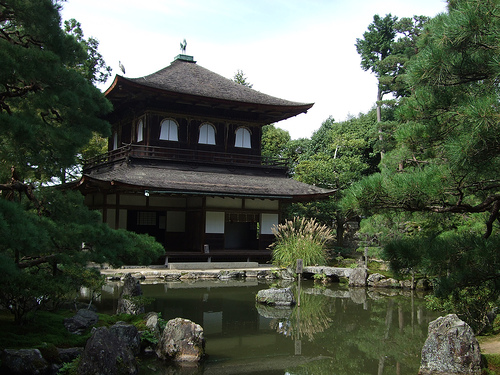
Ginkakuji Temple, or The Temple of the Silver Pavilion, is a zen temple that is also located in Kyoto. Like Kinkakuji Temple, this pavilion was constructed as a place of rest and meditation for the Shogun. The temple was originally going to be covered with silver foil but the whole process took so long that the plans never got to be fulfilled.
Thanks for come
If you are planning on taking a trip to Japan, these ten destinations should not be overlooked because they are representative of some of the most beautiful locations in the Land of The Rising Sun.
1. Mt. Fuji

If there ever was an iconic image and destination that clearly defines Japan, it would have to be Mt. Fuji. The almost perfectly symmetrical volcano is considered the national symbol of Japan. Mt. Fuji is so iconic that it has been depicted in various works of art that date back hundreds of years. Mt. Fuji is not just beautiful from afar, adventurous travelers can see how beautiful the volcano is up close by joining various climbs up the mountain. Because of the nature of its topography, Mt. Fuji can be approached from all sides. The official climbing season is in July and August. You can also elect to climb outside of the climbing season but take note that access to it during the off-season is drastically cut.
2. Yakushima

Located off Kyushu’s southern coast, Yakushima is an island that has become a popular destination for travelers who love the outdoors and being in the midst of nature. Yakushima is extensively covered by a beautiful cedar forest called Yakusugi Forest, which is also home to some of the oldest living trees in Japan. There are trees here that are more than 1000 years old. It has even been speculated that the oldest of the trees may be 7000 years old.
Although Yakushima has been logged quite all throughout Japan’s history for use in making cedar shingles during the Edo period, it has survived this and has now become a UNESCO World Natural Heritage Site.
Nature lovers will have fun hiking and camping in the area while communing with the towering trees.
3. Shiretoko National Park

The famous Shiretoko National Park is located on the Shiretoko Peninsula on the eastern part of Hokkaido. This is a fairly isolated area with roads that only go in about three fourths up the peninsula. Even the northern tip can only by seen by boat or by going on a multi-day trekking tour.
Shiretoko is considered the most beautiful of all the national parks in Japan. Because of its relative isolation, the Shiretoko Peninsula has become the home of a very diverse number of animal species including deer, brown bears, and foxes. During winter, the coast gets drift ice. Shiretoko is the southernmost region in the northern hemisphere to experience this.
4. Kii Mountain Range

Located near the south of Kyoto and Nara is the Kii Mountain Range. Its proximity to two of the capital cities that were seats of power in ancient Japan means that it is steeped in history. The mountains are located within the Kii peninsula that goes outwards to the Pacific Ocean. This mountain range is considered one of the spiritual places of the country and, according to legend, is the place where the gods of Shintoism and Buddhism lived. Because of this, the mountains have become a sacred place for many groups. There are three pilgrimage routes around the mountain as well as three sacred sites.
5. Horyuji Temple

The Horyuji Temple was ordered built by Prince Shotoku in 607. It was destroyed but a new temple was built in 711. The temple is one of the oldest temples in Japan and has become a national treasure. It is composed of a main hall and a five storied pagoda. Along with the central gate, it is one of the world’s oldest surviving wooden structures. There is a newly built building beside the temple that now houses an Buddhist art collection from the 6th and 7th century.
6. Himeji Castle

Considered as Japan’s most magnificent castle, Himeji Castle is fortunate for not having been destroyed or damaged by wars, fires or natural calamities. The castle has largely survived unscathed and is in its original state.
The castle has undergone many changes. In the 14th century, a fort was built around the castle site and succeeding clans that lived there would periodically enlarge it. The castle as we see it today was finally finished in 1609.
Himeji Castle is one of the best examples of a Japanese castle and its lush opulence inside (with wooden interiors) is worth checking out.
7. Shirakami Sanchi

The Shirakami Sanchi or Shirakami Mountain Range straddles the Akita and Aomori prefectures and has a land area of 1300 square kilometers. The mountain range has become an important location in Japan because its natural resources are being protected. For one, one of the few beech forests in the country are located here. Some of the trees in the area are 2000 years old. The altitude of the mountain range has also resulted in the proliferation of alpine flora. But aside from these, the Shirakami Sanchi is also the location of some very interesting sites like the Akaishi River, which is considered the most beautiful piece of water scenery in the country.
8. Historic Monuments of Ancient Nara

Nara was the old capital of Japan back in the year 710. Because of its important political significance during that time, many important structures and monuments were built here. Most of them are still standing.
The monuments of Nara generally refer to the various ruins found in the area, which include six temples and a primeval forest. Excavations done in the area have resulted in the discovery of various structures including the palace site and Sujakumon Gate. The six temples located in the area are: Todaiji, Kasuga-Taisha, Kofukuji, Yakushiji, Toshodaiji and Gangouji. At present there is a concerted effort to preserve these historic edifices.
9. Kinkakuji Temple

The distinctive Kinkakuji Temple, or Golden Pavilion Temple, is one of the more popular destinations in Kyoto. The building is a very beautiful structure and is made very unique because of the gold foil that was used to envelope the whole structure. The building was built in 1397 as a retirement residence for Shogun Yoshimitsu. The present Kingakuji has been rebuilt because the building was burned down twice during the Onin War in the 1400s and then again in 1950.
10. Ginkakuji Temple

Ginkakuji Temple, or The Temple of the Silver Pavilion, is a zen temple that is also located in Kyoto. Like Kinkakuji Temple, this pavilion was constructed as a place of rest and meditation for the Shogun. The temple was originally going to be covered with silver foil but the whole process took so long that the plans never got to be fulfilled.
Thanks for come
Royal View
|
On
a hillside plateau, overlooking Prambanan temple complex and with a
view to Mount Merapi behind Prambanan Temple complex, lie the remains of
a once grand palace. The palace (kraton) is named Ratu Boko after a
King Boko of local folklore, but the real owner of the palace is more
likely to have been a king of a local dynasty. The position gives a view worthy of royalty, but in addition, it is possible that the location was chosen for strategic reasons, as the structures also show signs of being fortified, and a dry moat was used for additional security. Grand stone gates, built on two levels, are the largest and most often photographed structures of the site, it is clear that these lead to what was once a settlement, which sets Ratu Boko apart from the other archeological sites in Central Java which are entirely religious in nature. |
 |
|
The
hilltop plateau is divided into terraces that are separated by stone
walls and stone faced fortifications. The main residence is thought to
have been built on a set of stone foundations with a timber structure
for pillars and roof. The timber elements are no longer in place, but
the stone base shows the scale of the residence. Throughout the area you can find small Hindu and Buddhist temples and structures, a fountain adorned bathing area, bath house, a crematorium, multiple caves, an area used as a public hall. In 1790 the Dutchman Van Boeckholtz found ruins, and over time research was done, and by 1838 the Dutch commenced restoration work. In 1952 the Indonesian government took the reigns, and has continued work since then. Ratu Boko is atop a hill, and a system of drainage trenches and water storage ponds was developed to maintain water supply.  |
|
The folklore of Loro Djonggrang
| This story connects the Ratu Boko Palace with the Prambanan and Sewu temple complex. The name of King Boko comes from Javanese Folklore, in which King Boko was the father of Loro Djonggrang. A prince named Bandung desperately wanted Loro Djonggang to marry him and she refused, as she he had killed her father. He insisted, and she finally agreed on one condition. He must build |
 |
|
1000
temples in one night. Prince Bandung summoned up spirits to help him,
and close to dawn, much to the dismay of Loro Djonggrang they had
completed the 999th temple. Loro Djonggrang ordered all of the servants
to light a large fire, and begin pounding rice. The roosters were fooled
into thinking it was dawn and began to crow, the spirits fled, and the
final temple was left unbuilt. Prince Bandung was furious and turned
Loro Djonggrang into stone, representing the final temple. According to the traditions, she is the image of Durga in the north cell of the Shiva temple at Prambanan, which is also known as Loro Jonggrang or the Slender Virgin. |
|
Getting there and getting in
::Ratu Boko is located 3km south of the Prambanan complex and east of Yogyakarta, off the road to Solo.We recommend you organise a car and driver through either our Visitor Assistance Centre or your hotel. This way you can also have transport ready to take you back when you are ready to head back. The other alternatives are a tour group mini-bus, or even a taxi.
Tickets are available at the official ticket booth at the entrance
The fees are as follows:
RATU BOKO, Entrance Ticket Pass
| Indonesian local or KITAS card holder | IDR 25.000 |
| Indonesian local Children | IDR 10.000 |
| Foreigner - Adult | IDR 123.500 |
| Foreigner - Student [registered] | IDR 60.000 |
RATU BOKO - PRAMBANAN Package
| Indonesian local or KITAS card holder | IDR 45.000 |
| Indonesian local children | IDR 20.000 |
| Foreigner - Adult | IDR 260.000 |
| Foreigner - Student [registered] | IDR 130.000 |
RATU BOKO - BOROBUDUR Package
| Indonesian local or KITAS card holder | IDR 50.000 |
| Indonesian local children | IDR 20.000 |
| Foreigner - Adult | IDR 280.000 |
| Foreigner - Student [registered] | IDR 140.000 |

